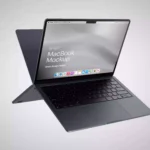Introduction
It’s 2025, five years since Apple’s revolutionary M1 chip first appeared in the MacBook Air. Buying an older generation might initially sound like a bad idea, but for an incredible price of $599, the MacBook Air M1 is an incredibly fantastic deal. This piece explores why the M1 Air remains relevant, its advantages, its disadvantages, and if this deal remains worth it in 2025.

Why You Should Consider the M1 Air in 2025
Excellent Performance for Everyday Use
Even after a half-decade of usage, the M1 chip easily handles everyday tasks like web browsing, office work, playing multimedia, and occasional coding. It also has it easy when it comes to multitasking moderately without lag and is perfect for most users who are not overloading it with heavy 3D modeling or large video renders.
Longer Battery Life & Efficiency
One of the most defining features of the M1 Air is its great battery life. 2025 reviews all confirm runtimes of over 14–16 hours on standard usage. Its quiet, fanless design and power-efficient processor enable all-day use on a single charge.

Mature macOS Support & Longevity
The M1 platform is fully compatible with Apple’s latest macOS versions, offering future-proofing and security updates. Rock-solid performance and reliability are experienced by the users after 4–5 years, with hardware-software balance continuing to improve to minimize failure or compatibility hazards.
Unmatched Value for a “New” Mac
At $599, the M1 MacBook Air becomes the cheapest new or nearly new Mac available. It breaks the high premium pricing barrier for a Chromebook/Windows laptop. At this price, MacBook Air becomes the most viable alternative for those who would have opted for a Windows laptop or Chromebook.
Even a Good Machine for Most Purposes
For creators working on medium-level tasks like video editing, photography, coding, or hobbying, the M1 Air delivers impressively good performance. It remains an excellent device for anyone beyond high-end professional use cases.
The “But”s — Where the M1 Air Lags in 2025
Constrained RAM and Storage (Non-Upgradable)
Most $599 configurations come with 8GB RAM and 256GB SSD storage, which is sufficient for light use but constraining for heavier multitasking or big data projects. These are soldered components, and there will be no opportunity to add more later, so select configurations prudently.
No Support for Multiple External Displays
In contrast to more modern Apple silicon chips (M2, M3, M4), the M1 Air is limited to a single external display. This might be a problem for those with multi-monitor setups.
Aging Hardware & Risk of Battery Degradation
Battery life will wear out over time with use, so with older or refurbished units, it is important to check cycle counts and overall battery condition. Thermal paste degradation and SSD wear are also issues for heavy use.
Futureproofing & Feature Set Lags
Newer MacBook Airs do come with updates such as better webcams, brighter displays, faster chips, more GPU power, and new features. If planning to use a laptop for 8+ years or need the latest technology, these features matter.

Verdict: Can You Resist This $599 MacBook Air Deal?
By all means—if your workflow is in line with the capabilities of the M1 Air. It is a good option for students, professionals performing routine office and creative tasks, bloggers, and web developers. Just be mindful of fixed RAM/storage, battery life, and connectivity limitations. If the price is reasonable and performance demands are low, this is an incredible 2025 purchase.




